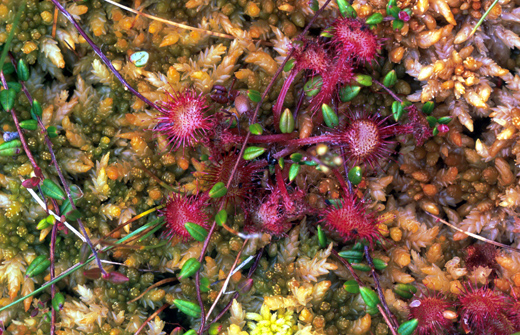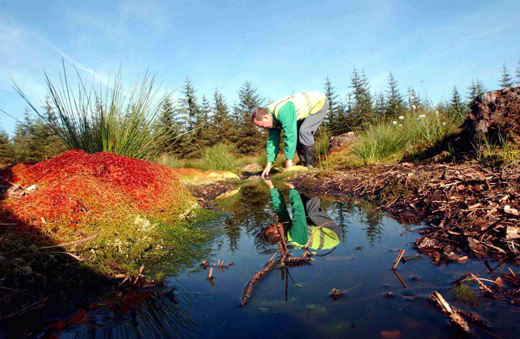UK: Wildlife returns to flooded bog
14/08/09
A huge restoration project to bring back 12,000 year old bogs in Northumberland has been completed nearly two years ahead of schedule.
The ambitious project aimed to bring back the deep bogs that had been sucked dry by pine plantations used to restore the UK's timber reserves after the resource-sapping First World War. Timber remains important to the nation but a government target to get at least 95 per cent of the UK's Sites of Special Scientific Interest (SSSIs) into shape by 2010 meant landscape restoration was needed on a massive scale.
So out came the conifers - 800,000 of them in fact - to allow the water to flow freely again. The last thing anyone wants is an overflowing bog, but in this case, plugs were put in 15 km of drains to let it fill back up. The result is a paradise for nature alive with plants such as bog asphodel, sundews and sphagnum moss and a return of the varied bird life and invertebrates.
Healing the landscape / Forestry Commission
Neville Geddes, from the Forestry Commission, said: "For the Border Mires it's now a question of time. Most of the critical work has been done and the bogs will gradually heal over hundreds of years, laying down new peat and supporting ever more flourishing colonies of bog plants and insects."
The Border Mires have historical interest too. A couple of thousand years ago these bogs would have been a considerable obstacle for Roman legionaries patrolling near Hadrian's Wall and in a few years the soldiers would once again recognise the view. In latter times the bog served as a refuge for the "Moss-Troopers" - gangs of outlaws that evaded the law due to their intimate knowledge of the desolate swamp.
Blanket bog is an internationally endangered habitat and the UK holds approximately 13 per cent of the world resource so the conservation and restoration of the Border Mires, which were formed when the ice finally gave up its grip on the British Isles, is of global concern.

Round leaved sundew (Drosera rotundifolia) on sphagnum moss / Forestry Commission
Geddes continues: "We get dazzled by the wonders of the rainforest and marvellous ancient woodlands. But while bogs may lack the same visual impact, in many ways they are an even more endangered and fragile habitat."
Mark Sutcliffe of Natural England said: "Peat bogs take thousands of years to develop and are some of our most unique and precious paces for wildlife. In summer they are a spectacular sight with the bright yellow flowers of bog asphodel, the pink flowers of cranberry and bog rosemary, and the jewel-like hummocks of multi-coloured mosses."
The partnership between the Forestry commission, Northumberland Wildlife Trust, Northumberland National Park, Natural England, Newcastle University and RAF Spadeadam cost around £700,000 but as Plant Talk reported recently the art of restoration ecology is hugely valuable to biodiversity and well worth the money.
